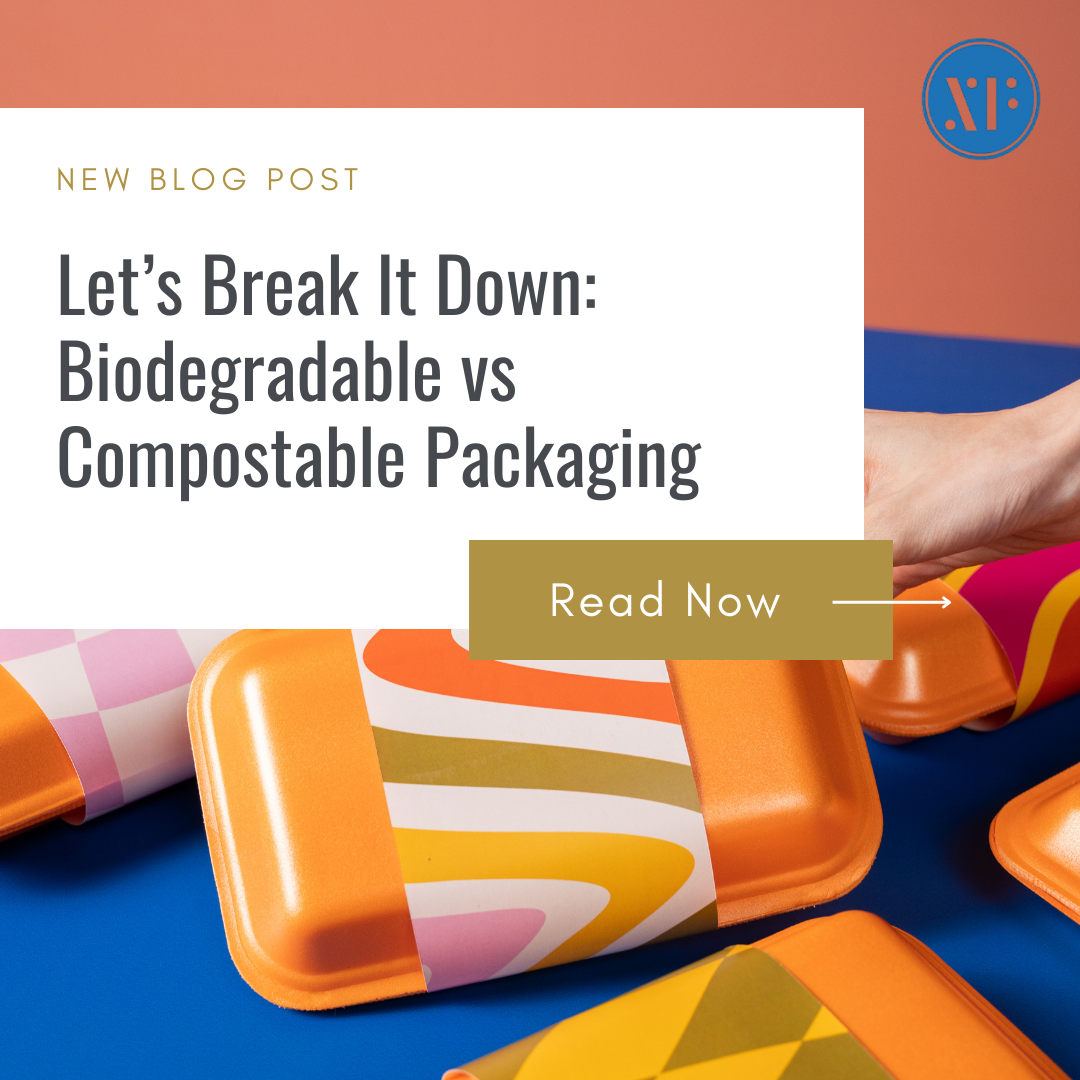It’s a common misconception. Many people use the terms biodegradable and compostable interchangeably. However, they don’t mean the same thing, and when it comes to sustainability, this distinction matters more than you might think.
So let’s explore what they really mean, why the difference is important, and how it impacts the packaging industry.
The Definitions: Not All That Is Biodegradable Is Compostable
- Biodegradable
A biodegradable material is one that can be broken down by microorganisms (like bacteria and fungi) into natural elements such as water, CO₂, and biomass. Sounds good, right? The catch is that the term “biodegradable” is not well regulated. Unless specific laws apply (such as the FTC Green Guides in the US or the EU Green Claims Directive), companies can use the word very loosely.
This often leads to greenwashing. For example, fossil-based plastic may technically degrade into smaller pieces over hundreds of years, but that doesn’t make it biodegradable in a meaningful sense. In most cases, these plastics break down into harmful microplastics, which pollute ecosystems and food chains.
Some bioplastics, however, can be considered biodegradable if manufactured correctly. But again, without strict timelines or disposal conditions, the word “biodegradable” remains vague and unreliable. - Compostable
Compostable packaging, on the other hand, goes a step further. It doesn’t just break down eventually, it decomposes within a specific timeframe and under defined conditions to create something useful: nutrient-rich compost. There are two main categories:- Home-compostable: Breaks down in backyard compost bins at lower temperatures.
- Industrially compostable: Requires high temperatures and controlled conditions in industrial composting facilities.
Importantly, compostable materials are regulated and certified. Standards such as ASTM D6400 (USA) and EN 13432 (EU) ensure compostable products decompose safely, leaving behind no toxic residues or heavy metals.
Biodegradable vs Compostable: A Quick Comparison
| Feature | Biodegradable | Compostable |
| Breaks down? | Yes | Yes |
| Timeframe? | Undefined | 90 – 180 days (unregulated) |
| Requires conditions? | Not always | Yes |
| Soil benefit? | Not guaranteed | Yes, adds nutrients |
Why the Difference Matters for Packaging
If you’re a business choosing packaging materials, this difference is critical. Customers increasingly expect companies to walk the talk on sustainability and using “biodegradable” packaging that leaves behind microplastics may undermine trust.
Biodegradable packaging:
- May take years or decades to break down.
- Can leave harmful residues.
- Often loosely regulated.
Compostable packaging:
- Breaks down in months (under correct conditions).
- Creates safe, nutrient-rich compost.
- Strictly certified under international standards.
The result? Compostable packaging is far more reliable in reducing long-term environmental impact.
The Bigger Picture: Sustainability Beyond Disposal
While compostable packaging is an excellent alternative to plastic, it’s not a silver bullet. In fact, experts argue that preventing waste is better than managing waste. Reusable and circular packaging systems, where materials can be collected, returned, and repurposed multiple times, often outperform single-use compostable options.
As the Ellen MacArthur Foundation explains: “The more intact a material can stay while being circulated, the better, as it preserves not only the material, but also the embedded labour and energy.
So while compostable packaging plays a key role in reducing landfill waste and supporting a circular economy, businesses should also consider reusability, recycling, and waste prevention strategies.
Greenwashing Alert: When “Biodegradable” Isn’t Enough
Because the term “biodegradable” is loosely regulated, it’s often misused. Many so-called biodegradable plastics break down only into smaller fragments, leaving microplastics behind. Without clear certification, the claim is meaningless.
In contrast, compostable products must undergo strict testing to prove that they fully decompose within a set timeframe, leaving nothing harmful behind. Certifications like EN 13432 (Europe) or ASTM D6400 (USA) are key indicators of authenticity.
Wrapping It Up – Biodegradable vs Compostable Packaging
The next time you hear someone say “biodegradable and compostable… aren’t they the same?”, you’ll know the difference.
Biodegradable: Can break down, but timelines are vague, results uncertain, and risks of microplastics are high.
Compostable: Breaks down quickly, safely, and in a regulated way, leaving behind healthy compost.
For businesses, choosing compostable packaging sends a strong signal: you’re committed to sustainability in a meaningful, measurable way. It’s not just about looking green, it’s about making choices that truly benefit the planet and future generations. Compostable packaging isn’t just about disposal. It’s about responsibility.
“Whether mailers, shopping bags, or bubble bags, XF COMPACK provides the right compostable packaging solution based on your business needs. With our advanced materials, we are able to replace even the most demanding traditional plastic applications with eco-friendly alternatives.”


